 Making Your OS73C Autoharp Folk- and Bluegrass-Friendly |
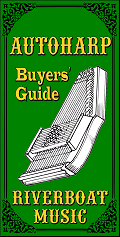 |
|
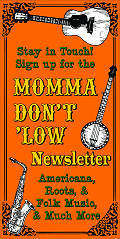

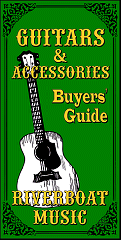
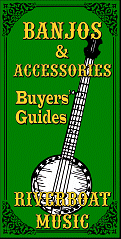
| Making Your OS73C Autoharp Folk- and Bluegrass-Friendly
I like to do "old-timey" sets, including historical reenactments, but I am also a Folk singer, so when I got my hands on a new, but "old-timey-looking" autoharp, I immediately began considering how to make it useful for Folk, Bluegrass, or Country. Like almost all Oscar Schmidt Autoharps, the OS73C lacks chords that are frequently used in those guitar-driven genres, especially B minor, F# minor, and E major. But fortunately, reconfiguring Oscar Schmidt 21-chorders is not all that difficult. Tweaking the chords on my OS73C would allow me to look "old-timey" while playing along on nearly any Folk, Bluegrass, or Country song. This article describes how I did the reconfiguration, including one major difference between reconfiguring this 'harp and any other Oscar Schmidt 21-chord 'harp. But first, an explanation of this unique instrument's background. An Iconic Shape - The 15-chord version has a long and glorious history, including its association with "Mother" Maybelle Carter, who almost singlehandedly revived interest in Autoharps after sales and interest had drastically declined. In 2002-2003, it inspired several movie scenes and a new "retro" line of Autoharps.
When consulted about an upcoming Christopher Guest movie (2003's A Mighty Wind) Oscar Schmidt designed a retro-looking Autoharp for Catherine O'Hara to play. Amazingly, Catherine O'Hara actually learned to play the Autoharp and played it fairly well in several scenes. In "flashback" scenes she is playing a mid-century " The 15-chord reproduction of the model 73 is shown below left. That's the model O'Hara played. Differences between this one and the mid-20th century Autoharps include the larger, screen-printed logo, and some engineering changes that make these easier to play than the old ones. (They're still just as hard to hold, though. Fortunately for me, I have long arms.)
The 15-chord version created for the movie is called the OS73B. And actually, many folks who've been around Autoharps or even dabbled with them would assume it's seventy years old instead of 20-something. But of course, there also seemed potential to sell a 21-chord version, so OS made that as well - the OS73C. (There's also a version with a passive magnetic pickup - the OS73CE.) The OS73C wouldn't fool anyone who had ever seriously dabbled with vintage autoharps. (Then again, I think there are only about six of us, so we're probably safe on that score.) 21-chord Autoharps didn't appear until about 1970. The plastic chord bar cover would be an immediate giveaway. That said, as of this writing, only a tiny handful of people I encounter - even in musical circles - have ever had their hands on an autoharp. So my chances of getting "outed" as a faker if I take it to an early-1900s reenactment are almost microscopic. If you're thinking about one of these, I would recommend the 21 chorder. It plays in more keys, and is more easily adapted to play Folk keys. As of this writing (May, 2024), it is still available from several vendors, including Amazon. The electric version (OS73CE) is also available through Capital Music, an Amazon affiliate. Click here to see it. Of course those links may go away in a few weeks, but they hopefully give you a starting point. (Yes, I get a few dollars, if you click on the Amazon link and buy the product on that visit. Of course if you just look at it and later on click on the link when it pops up on ESPN.com or something THEY get the $$$, so make good choices.) Ironically, most vendors are selling the OS73B (15-chorder) for almost the same price as the OS73C (21-chorder), and far fewer have been sold, so there are very few on the used instrument marketplaces or auction sites.
I have uploaded a YouTube that shows me performing this conversion. A couple minor bits that I posted here got left out - my bad. But you may want to watch the video AND read the article just to see how simple the reconfiguration actually is.
| |||||||||||||||||||||||||||||||||||||||||||||||||||||||||||||||||||||||||||||||||||||

| 
|
If you can't find chord bar blanks, you can nearly always find the felt you need (above, right) and refelt the chord bars you're removing. The felt is the same as the felt for the other 21-chorders. Don't buy the felt for the 15-chorders.
Note: An advantage of buying new chord bar blanks for this project is that you can retain the old chord bars. If you decide you removed the wrong chords, you can always put those back and remove others. If you refelt your chord bars, then decide you removed the wrong chord, it's a little more work to reinstall it. Though I don't know anyone who regrets removing Ab or Bb7 . . . .
Leave the Strings Alone - You do not need to change the strings on your OS73C. These are made like piano wire and may last 60 years if the instrument is stored properly.
Consider Ordering Buttons - At this moment (May, 2024), buttons for E, Bm, and F#7 are available online for a few dollars each. Again, the vendors keep shallow stock, so you may find yourself relabeling existing buttons. I confess that the new ones are lily white, in contrast to the "antiqued" color of the existing buttons. I have a set of new buttons soaking in a tea solution as we speak.
"Gotchas When Working on OS73Cs (and other 21-chord OS 'Harps)" - I will repeat this elsewhere, but you need to keep in mind:
- The chord bar buttons are not attached permanently to the chord bars, so it's easy to lose track of which chord bar is which. When you remove ANY chord bar from an OS 21-chorder, write the chord name down on the side of the bar with a Sharpie. Immediately.
- Springs can stick to the chord bars as you pick them up, even if you're careful. Be very careful that the springs stay in place. (Autoharp owner Wendy Grossman warns us not to disassemble Autoharps over shag carpet. She also recommends putting a dab of superglue on the bottom of each spring to keep it in place permanently, though I haven't followed that recommendation.)
- The chord bars have a slot on one end and a hole on the other. Watch carefully how they go. When you are marking a new chord bar, make certain you have it facing the right way as you mark it.
Disassembling the Autoharp
First, tune your Autoharp. Then tune it again. Some of the later steps require testing chord bars to make certain they're playing the strings you want and dampening the strings you don't. If your Autoharp is badly out of tune, you can't really be sure.Carefully remove the four screws holding down the chord bar cover.
Lift the chord bar cover very slowly, jiggling it lightly so the buttons don't all come off. You may need to push some of the buttons down as you're working. You need the buttons to stay in place until you're certain the chord bars have been labeled.
When you have the cover safely off, look at the way the chord bars sit in the "comb." You'll see that each chord bar has a slot on one end and a hole on the other. That's how they need to go back in when you put things back together.
 Notice that the buttons simply sit in slots on top of the chord bars. That's deliberate, so you can change the chord bars around and put the buttons in the rows you want.
Notice that the buttons simply sit in slots on top of the chord bars. That's deliberate, so you can change the chord bars around and put the buttons in the rows you want.
Unfortunately, it also means that they fall out easily. And that it's nearly impossible to take one chord bar out without also pulling out the button(s) next to it.
That's why it's critical to make certain that the name of the chord is written on any chord bar you take out, whether you plan to keep that chord or not.
When you pull any chord bar out, make certain the springs stay in place.
Removing the Felts
If you are refelting chord bars, you should be able to carve/slice the felt pieces off using a very sharp knife. Either way, you might find it helpful to use GooGone or mineral spirits or the like to get the rest of the glue/goo off the bars. You may be able to use nail polish remover to remove any "Magic Marker" markings on the side of the chord bar; for example, if you want to relable it.Save the felt bits - you never know when you might need to tweak some other chord bar.
Replacing the Felts
 Folks do this a few different ways. If you click on the graphic to the right and print the PDF full-sized, it should conform to the actual size and shape you need for your OS73C. (Be sure to tell the printer driver to print at 100%).
Folks do this a few different ways. If you click on the graphic to the right and print the PDF full-sized, it should conform to the actual size and shape you need for your OS73C. (Be sure to tell the printer driver to print at 100%).
Hold the printed graphic over the strings on your OS73C to make certain it lines up. (We have a separate graphic for all other OS 21-chorders.)
Some people use a graph like this to cut the felt strips into little blocks and glue them on.
I prefer to glue a single felt strip on and then use a razor blade, Xacto knife, or widget to notch where the gaps should be. That reduces the chances of the individual felt blocks falling off in the future.
 |
 |
Reconfiguring Your Chord Bars
However you go about replacing chords you don't need with chords you do, you will wind up reconfiguring the "layout" of your chord bars to some extent.You could just put the replacement chord bars where the old chord bars were and memorize where they are.
However, most folks who take on this kind of project try to put the chord bars into an arrangement that makes sense. For example, skootching the chord bars for the minor chords to the left so you can put Bm on the end.
The most popular rearrangement ("Bowers") moves everything, including which row holds the buttons for the major keys. It may seem onerous to make all those changes, but most Autoharpers who've made the conversion will never go back.
 Full "Bryan Bowers/Americana Conversion - Decades ago, autoharp virtuouso Bryan Bowers came up with a chord bar setup that is both more logical and more guitar-friendly.
Full "Bryan Bowers/Americana Conversion - Decades ago, autoharp virtuouso Bryan Bowers came up with a chord bar setup that is both more logical and more guitar-friendly.
Countless harpers have made the same conversion since, especially folks who wanted to play Folk, Bluegrass, or Country.
The "Bowers" setup leaves off Ab, Bb7, and Cm and adds E major, Bm, and F#m.
Responding to popular demand, Oscar Schmidt introduced a new model - the Americana, which essentially uses Bryan's setup. Unfortunately Americanas are not cheap, as you'll see if you click on this link to Amazon.
This does require skootching all of the chord bars over a little and rearranging which row the buttons go in. However, it only requres replacing or reconfiguring three chord bars - the way we've been discussing all along.
Advantages of "Bowers" Configuration - Now that I've been playing autoharp a bit more, I see the advantages of this setup. If you are playing in F, C, G, D, or A, the chords related to each song key are in the same relative position. So if you are used to playing a song in D, say, and someone wants to play it it C, you can simply move your left hand two buttons over, and everything else is the same.
(By the way, most custom autoharp manufacturers, like d'Aigle Autoharps use this setup on their 21-chorders, unless you request a different one.)
Testing and Inserting the New Chord Bars
 To test each chord bar, remove whichever chord bar is closest to the right end of the row (usually B7). Put the new chord bar in its place temporarily. Then hold it down and pick each string to make certain the new chord bar is playing or dampening the correct strings.
To test each chord bar, remove whichever chord bar is closest to the right end of the row (usually B7). Put the new chord bar in its place temporarily. Then hold it down and pick each string to make certain the new chord bar is playing or dampening the correct strings.
Do this for all of your new chord bars.
Then, if you're doing a major reconfiguration like the Bowers suggestion above, carefully rearrange all of the chord bars into the sequence you need.
As you put each chord bar into its new position, be certain that the bar is going the right direction (remember, there's a slot on one end and a hole on the other).
Finally, make certain each button is sitting in the slot on the correct chord bar. And that it will be in the right "row" when the chord bar cover goes back on.
Closing Up Shop
Once you have all your chord bars and buttons where you expect them to go, test every button to make certain it is playing the chord you think it is. Yes, it's "touchy" to do this without the chord bar cover in place. But it's a bigger pain to realize you've put the C7 button into the F chord bar after you've screwed the chord bar cover back into place.
Also, this helps you make certain all of the springs are in place and that your new chord bars are doing the job they're designed for.
 When you try replacing the chord bar cover, you'll have to nudge most of the buttons gently into position to come through the holes properly. A toothpick or something similar helps at this stage.
When you try replacing the chord bar cover, you'll have to nudge most of the buttons gently into position to come through the holes properly. A toothpick or something similar helps at this stage.
Settle the chord bar cover gently over the buttons. When the buttons have all popped through their appropriate holes, test them again.
Finally, screw the chord bar cover back down. Test every chord again. And retune. And play to your heart's content.
Tracking Down
If you were interested in one of these instruments and you haven't purchased one yet, call your local music store and see what they can do for you. It's to your benefit to keep them in business. If you have to explain to them what an Autoharp is, though, try somewhere else.Online sources for these include Elderly Music, who will give the best support, and Autoharpstore.com, who will often give the best prices (or free gig bags, or both).
In the following list, I'm providing the Amazon link. Yes, I get a few dollars if you click on that link and buy the thing on that visit, but, unlike some other vendors, Amazon leaves the product link up even when they are sold out, so you can still see photos, descriptions and reviews.
 OS73B - The fifteen-chord version that Catherine O'Hara played in "A Mighty Wind." It's the most traditional-looking of the line, but also the most limited, chord-wise.
OS73B - The fifteen-chord version that Catherine O'Hara played in "A Mighty Wind." It's the most traditional-looking of the line, but also the most limited, chord-wise.
 OS73C - The 21-chord version gives you more chords so you can play in more keys. You can also change or rearrange the chord bars much more easily.
OS73C - The 21-chord version gives you more chords so you can play in more keys. You can also change or rearrange the chord bars much more easily.
 OS73CE - This version of the 21-chord OS73C includes a magnetic pickup that runs behind all the strings. It is passive, but it can be plugged right into a guitar amp if you wish. The only outward evidence of the pickup is a 1/4" output jack.
OS73CE - This version of the 21-chord OS73C includes a magnetic pickup that runs behind all the strings. It is passive, but it can be plugged right into a guitar amp if you wish. The only outward evidence of the pickup is a 1/4" output jack.
More to Come
As I do more conversions and repairs, I expect this list of articles to continue growing.
And keep playing, singing, and sharing, whatever else you do!
Best of luck!
 Whatever else you get out of our pages, I hope you come away with some great ideas for "sharing the joy."
Whatever else you get out of our pages, I hope you come away with some great ideas for "sharing the joy."
And please stay in touch!
All material, illustrations, and content of this web site is copyrighted ? 2001, 2002, 2003, 2004, 2005, 2006, 2007, 2008, 2009,
2010, 2011, 2012, 2013, 2014, 2015, 2016, 2017, 2018, 2019, 2020, 2021, 2022, 2023, 2024 by Paul D. Race. All rights reserved.
Creek Dont' Rise(tm) is a participant in the Amazon Services LLC Associates Program, an affiliate advertising
program designed to provide a means for sites to earn advertising fees by advertising and linking to Amazon.com.
Note: Creek Don't Rise (tm) is Paul Race's name for his resources supporting the history and music of the North American Heartland as well as additional kinds of acoustic and traditional music.
For questions, comments, suggestions, trouble reports, etc. about this page or this site, please contact us.
| Visit related pages and affiliated sites: | |||||
| - Music - | |||||

|
 |
 |

|

|

|

|

|

|

|

|

|

|

|

|

|

|

|
| - Trains and Hobbies - | |||||
 |

|

|  |
 |

|
| - Christmas Memories and Collectibles - | |||||
 |

|
 |

|
 |

|
| - Family Activities and Crafts - | |||||
 |

|

|

|

|

|
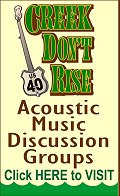




 Golden Autoharp
Golden Autoharp



